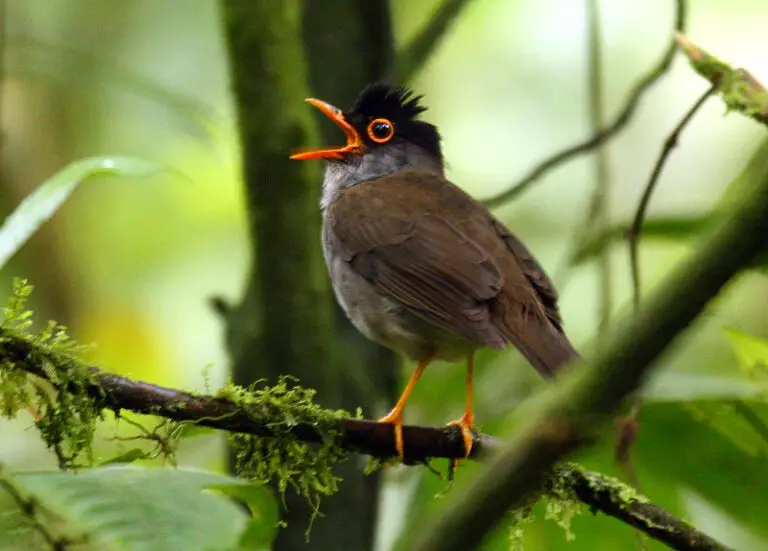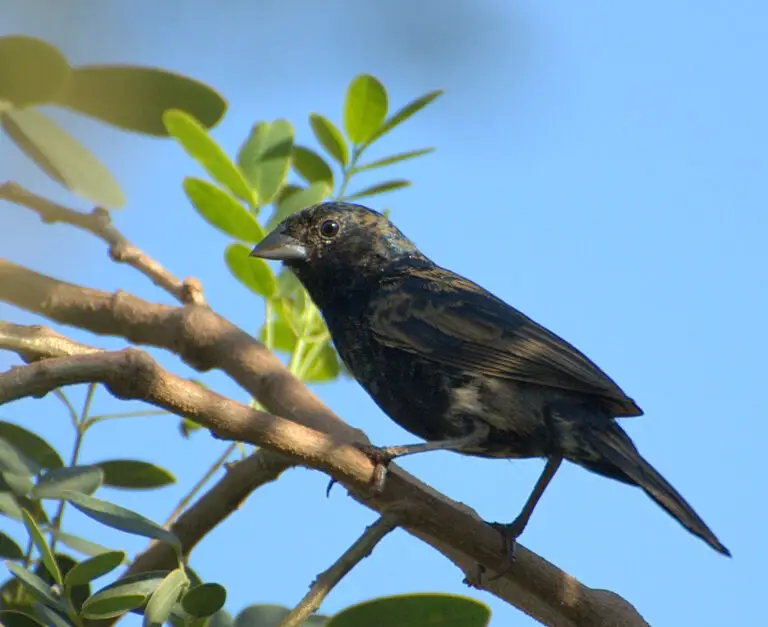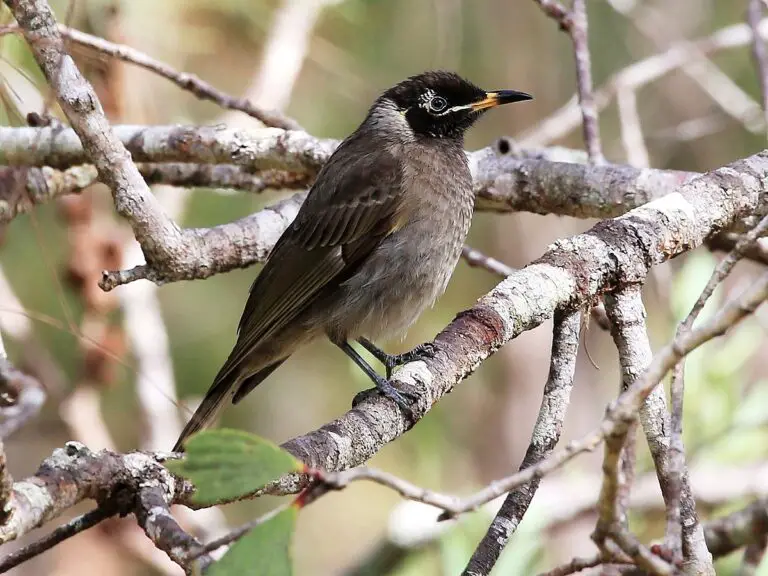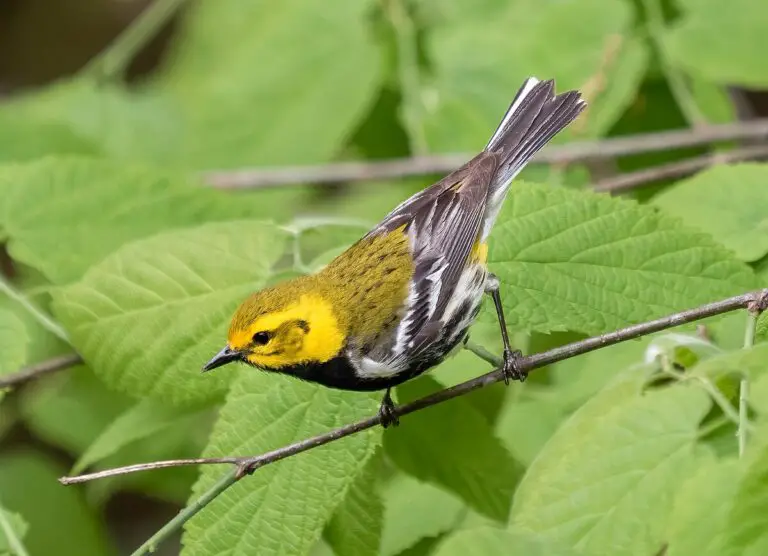Golden Oriole (Oriolus oriolus)
“Migrates between Europe and Asia!“
The Golden Oriole, scientifically known as Oriolus oriolus, belongs to the following taxonomic classification:
- Kingdom: Animalia
- Phylum: Chordata
- Class: Aves
- Order: Passeriformes
- Family: Oriolidae
- Genus: Oriolus
- Species: Oriolus oriolus
As for its conservation status, the Golden Oriole is classified as “Least Concern” by the International Union for Conservation of Nature (IUCN), indicating that it is not currently facing any significant threats to its survival.
Golden Orioles can be found in various locations across Africa, Asia, Eurasia, and Europe, inhabiting diverse habitats within these regions.
Common Name: Golden Oriole
Scientific Name: Oriolus oriolus
Physical Characteristics:
- Color: Brown, yellow, black, green
- Skin Type: Feathers
- Top Speed: 26 mph
- Lifespan: 8 – 12 years
- Weight: 15g – 20g (0.5oz – 0.7oz)
- Height: 20cm – 24cm (7.8in – 9.4in)
- Age of Sexual Maturity: 1 year
Habitat and Behavior:
- Habitat: Woodlands and open forests
- Group Behavior: Solitary
- Lifestyle: Diurnal
Diet and Feeding Habits:
- Diet: Omnivore
- Prey: Insects, fruit, seeds
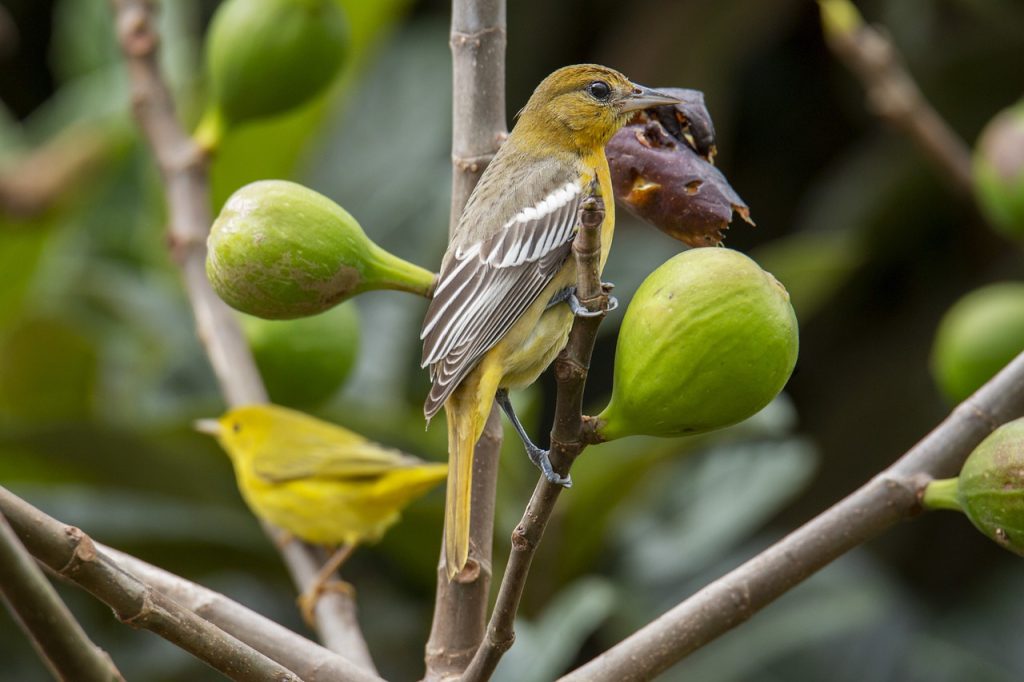
Reproduction:
- Number of Species: 2
- Average Clutch Size: 4
- Incubation Period: 15 – 18 days
- Age of Fledgling: 20 days
Distribution and Migration:
- Location: Across Europe and Asia
- Fun Fact: Migrates between Europe and Asia!
Predators and Threats:
- Predators: Eagles, storks, raptors
- Biggest Threat: Habitat loss
Distinctive Features:
- Yellow plumage of males and bright red eyes
Other Information:
- Other Name(s): Eurasian Oriole
- Wingspan: 44cm – 47cm (17in – 18.5in)
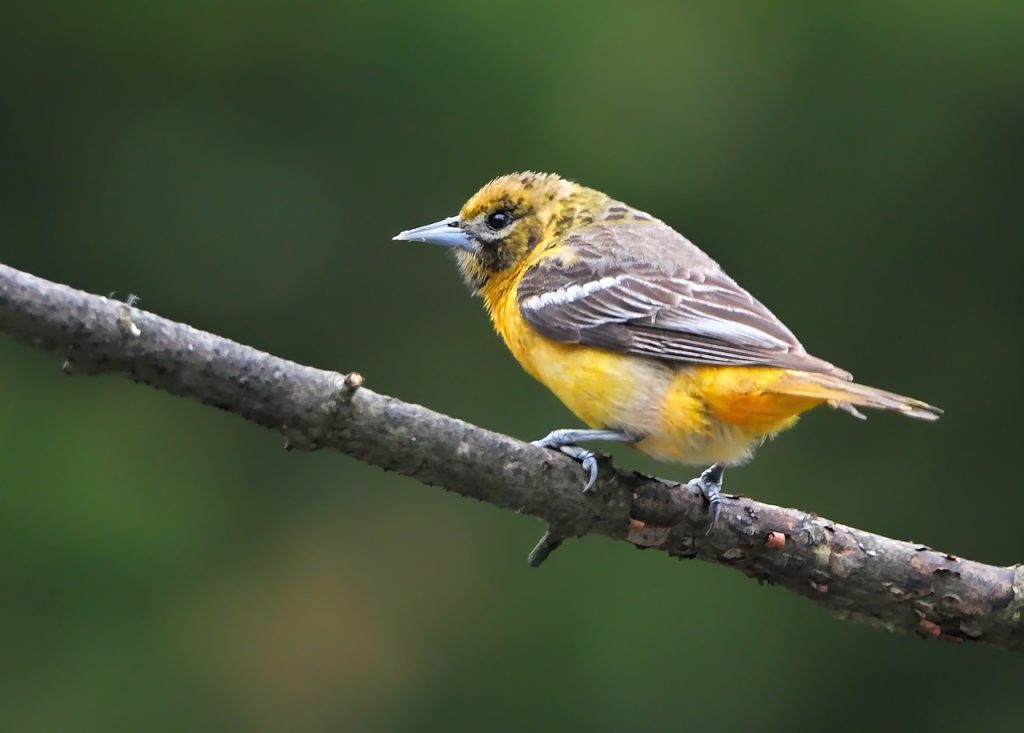
Golden Oriole Classification and Evolution
The Golden Oriole, also known as the Eurasian Oriole, is indeed a small species of bird found throughout Europe and western Asia. Its name is believed to have originated in the 18th century from the classical Latin word meaning “gold,” likely referencing its striking yellow plumage.
While Golden Orioles are nearly identical in appearance, there’s a belief that the ones found in Europe might constitute a separate sub-species from those found in Asia. This differentiation could be due to various factors such as genetic variations or slight differences in habitat preferences.
One notable characteristic of the Golden Oriole is that it is the only member of the Oriole family known to breed in the more temperate regions of the northern hemisphere. This adaptation sets it apart from other Oriole species, which typically inhabit warmer climates.
Overall, the Golden Oriole’s widespread distribution and unique breeding behavior make it a fascinating subject for bird enthusiasts and researchers alike.
Golden Oriole Anatomy and Appearance
The Golden Oriole boasts a distinctive and striking appearance:
Plumage: Its plumage is characterized by vibrant yellow feathers, especially in males, which give it a golden appearance. Females, while less vibrant, also sport yellow hues, albeit more subdued. The wings and tail feathers may have black markings, adding to its overall contrast and beauty.
Size: Golden Orioles are relatively small birds, typically measuring around 20-24 centimeters (7.8-9.4 inches) in height. They weigh between 15 to 20 grams (0.5 to 0.7 ounces), making them lightweight flyers.
Eyes: One of their most striking features is their bright red eyes, which stand out against their golden plumage. This feature adds to their allure and makes them easily recognizable.
Beak: Their beaks are slender and slightly curved, well-suited for catching insects and plucking fruits from trees.
Sexual Dimorphism: There’s a notable difference in appearance between males and females. Males exhibit more vibrant yellow plumage, while females have a more subdued coloration. This difference helps in distinguishing between the sexes.
Overall Shape: Golden Orioles have a sleek and streamlined body, ideal for agile flight through the dense foliage of their woodland habitats.
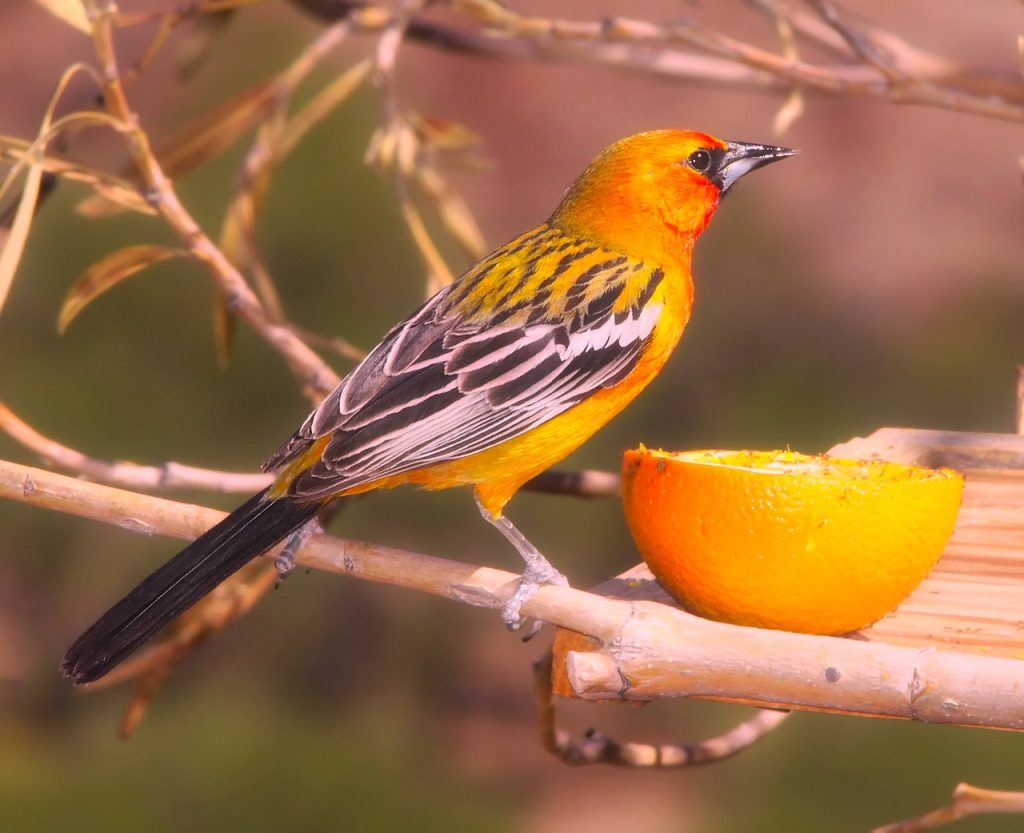
Golden Oriole Distribution and Habitat
The Golden Oriole’s distribution and habitat are closely intertwined with its preferred woodland environments and its migratory behavior. Here’s a breakdown:
Distribution:
Golden Orioles are found across a wide geographic range that spans Europe and western Asia. Their distribution covers various countries within these regions, including:
- Europe: They are commonly found in countries such as Spain, France, Germany, the United Kingdom, and others across the continent.
- Western Asia: Their range extends into western Asian countries like Turkey, Iran, Iraq, and parts of the Caucasus region.
While their breeding grounds primarily encompass Europe and western Asia, Golden Orioles undertake long-distance migrations to overwinter in Africa. They can be observed in regions across sub-Saharan Africa during the winter months.
Habitat:
Golden Orioles inhabit a variety of woodland and forested habitats throughout their range. Their preferred habitats include:
- Deciduous and mixed woodlands: They are often found in wooded areas with a mix of broadleaf and coniferous trees.
- Riparian forests: They frequent areas along rivers and streams with dense vegetation and ample food sources.
- Parklands and orchards: Golden Orioles may also occur in more open habitats with scattered trees, such as parks, gardens, and fruit orchards.
Within these habitats, Golden Orioles typically select well-vegetated areas with ample cover for nesting and foraging. They are particularly fond of tall trees with dense canopies, which provide suitable nesting sites and offer protection from predators.
The Golden Oriole’s distribution and habitat preferences reflect its adaptability to diverse wooded environments, where it can find the resources it needs to breed and thrive throughout its range.
The Golden Oriole’s reproductive cycle and diet are fascinating aspects of its life history:
Reproduction and Life Cycle:
- Breeding Season: Golden Orioles breed during the summer months in the more temperate regions of their range.
- Courtship Displays: Courtship displays involve elaborate behaviors such as chasing one another from tree to tree and through the canopy, showcasing their agility and vitality.
- Nesting: The female Golden Oriole constructs the nest, typically located in the fork of a tree, using plant fibers and stems. The nest is shaped like a shallow cup.
- Egg Laying: Females lay between 3 to 6 eggs, which are incubated primarily by the female for a period of 15 to 18 days.
- Parental Care: Both parents participate in feeding and caring for the young after hatching. The fledglings leave the nest within approximately 20 days after hatching.
- Lifespan: Golden Orioles typically live to be around 9 or 10 years old, although individual lifespans may vary.
Diet and Prey:
- Omnivorous Diet: Golden Orioles have an omnivorous diet, consuming a variety of food items including insects, fruits, and seeds.
- Feeding Behavior: Their relatively thick, slightly curved beaks are well-adapted for picking insects out of crevices and plucking fruits from branches.
- Foraging Techniques: Golden Orioles use their wide, clawed feet to grip onto branches while gathering food, enabling them to access fruits and seeds high up in the tree canopy.
- Seed Dispersal: As they consume fruits, Golden Orioles play a vital role in seed dispersal, helping to redistribute seeds throughout their native ecosystems.
These aspects of the Golden Oriole’s reproductive cycle and diet contribute to its ecological role within its habitat and reflect its adaptations for survival and reproduction.
The Golden Oriole faces various predators and threats, while also having interesting relationships with humans:
Predators:
- Aggressive Defense: Despite their shy demeanor, Golden Orioles become remarkably aggressive when defending their nests, swooping and diving at potential threats to intimidate them.
- Avian Predators: While their tree-top lifestyle provides some protection, Golden Orioles are still vulnerable to larger birds such as crows, eagles, hawks, and other raptors that may prey on them or their offspring.
Threats:
- Habitat Destruction: Deforestation poses a significant threat to Golden Orioles, as it diminishes their natural habitat. Loss of woodland areas reduces their nesting sites and food sources, contributing to population declines and range contraction.
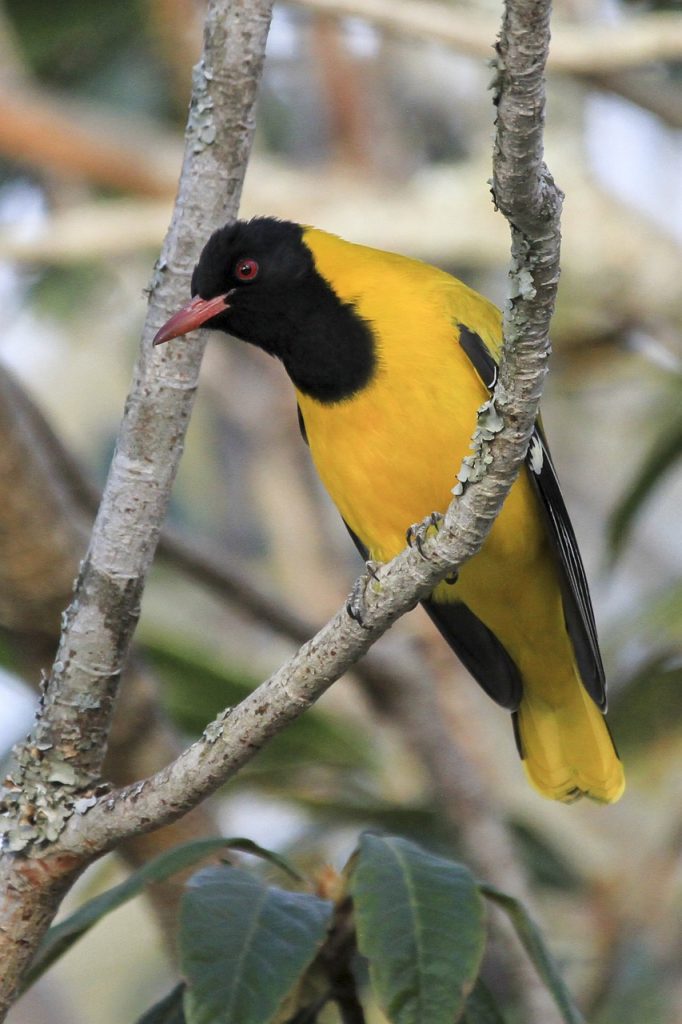
Interesting Facts and Features:
- Harbinger of Spring: In northern parts of Europe, the arrival of Golden Orioles is seen as a sign of spring, with their migratory patterns often coinciding with the changing seasons.
- Long-Distance Migration: Golden Orioles from western European regions migrate as far south as Namibia and South Africa during the winter months, showcasing their impressive migratory capabilities.
- Historical Naming: While the Golden Oriole’s name was officially coined in the 18th century, there are suggestions that the Romans may have been referring to them as “Orioles” as early as the 12th century.
Relationship with Humans:
- Shy Behavior: Golden Orioles are incredibly shy birds, often difficult to spot high up in the canopy. Their greenish females are sometimes mistaken for Green Woodpeckers, highlighting their elusive nature.
- Cultural Significance: Despite their elusive behavior, humans are captivated by the Golden Oriole’s distinctive and melodious song, which has inspired awe and admiration throughout history.
- Impact of Deforestation: Human activities, particularly deforestation, have a significant impact on Golden Oriole populations by reducing their natural habitat and threatening their survival.
These aspects of the Golden Oriole’s interactions with predators, environmental threats, and human society highlight the complex dynamics shaping its existence in the wild.
The conservation status and current status of the Golden Oriole reflect a mix of challenges and positive trends:
Conservation Status:
- IUCN Listing: The Golden Oriole is categorized as being of “Least Concern” by the International Union for Conservation of Nature (IUCN). This classification indicates that while there are concerns about its habitat loss and other threats, its overall population is not at immediate risk of extinction.
Population Trends:
- Stable Populations: Despite habitat loss and other pressures, populations of Golden Orioles are generally stable across their range. This stability suggests that they are resilient to some extent to the threats they face.
- Regional Variations: While populations of Golden Orioles in Asia may be experiencing slight declines, those in Europe appear to be increasing. This regional variation underscores the importance of considering local factors and conservation efforts when assessing population trends.
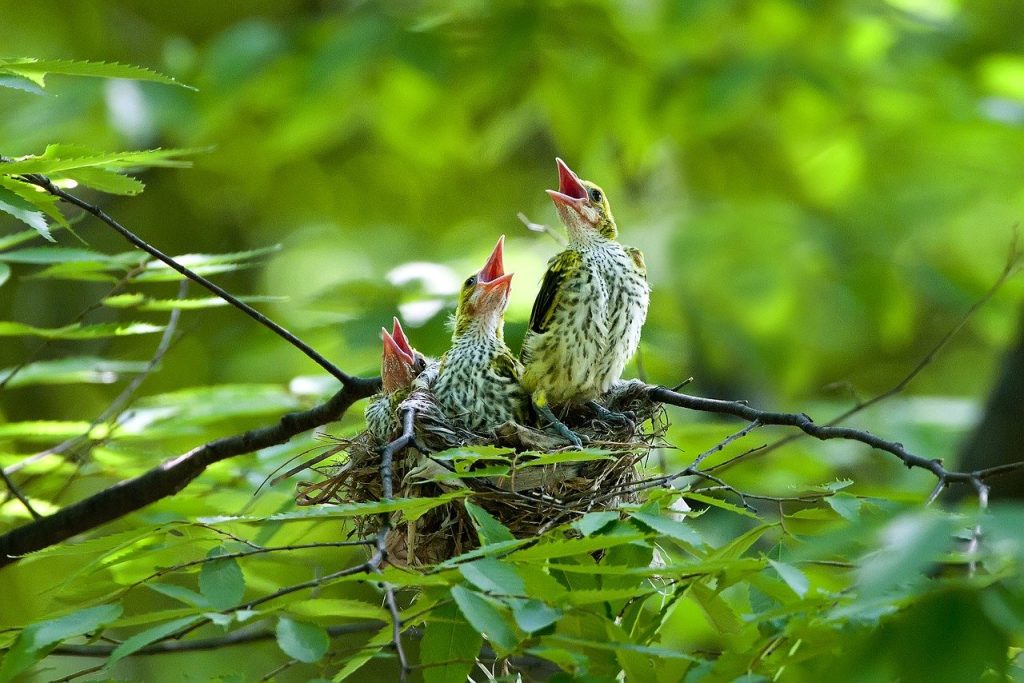
Challenges:
- Habitat Loss: Deforestation and habitat destruction pose significant threats to Golden Orioles, particularly in regions where their woodland habitats are being cleared for agriculture, urbanization, and other human activities.
- Human Impact: Human activities such as deforestation and habitat fragmentation directly impact Golden Oriole populations by reducing suitable nesting sites and foraging areas.
Conservation Efforts:
- Habitat Protection: Efforts to conserve and restore woodland habitats can benefit Golden Orioles by providing essential nesting sites and food sources.
- Awareness and Education: Increasing public awareness about the importance of conserving forest ecosystems and the species that depend on them can help garner support for conservation initiatives.
- Monitoring and Research: Continued monitoring of Golden Oriole populations and research into their ecology and behavior can inform conservation strategies and ensure effective management of their habitats.
Overall, while the Golden Oriole faces ongoing threats from habitat loss and other human activities, its status as “Least Concern” suggests that concerted conservation efforts have the potential to safeguard its populations into the future. Continued monitoring and conservation actions will be crucial for ensuring the long-term survival of this charismatic bird species.
Conclusion
The Golden Oriole is a captivating bird species known for its striking appearance, melodious song, and fascinating behaviors. While facing threats from habitat loss and predation, its resilient populations across Europe and western Asia, coupled with conservation efforts, have earned it a status of “Least Concern” for extinction. With continued conservation efforts and habitat protection, the Golden Oriole can continue to enchant bird enthusiasts and thrive in its woodland habitats for generations to come.
